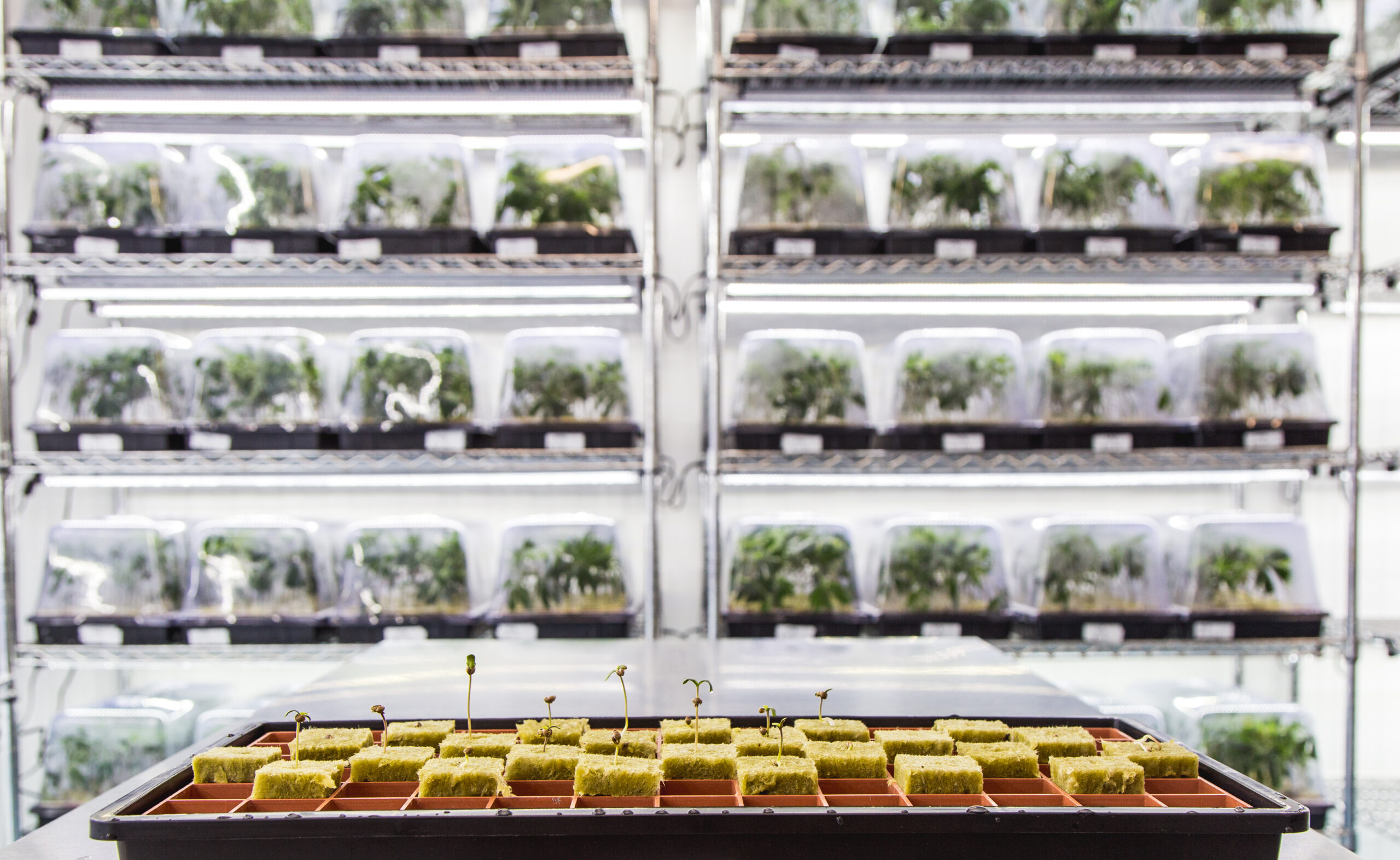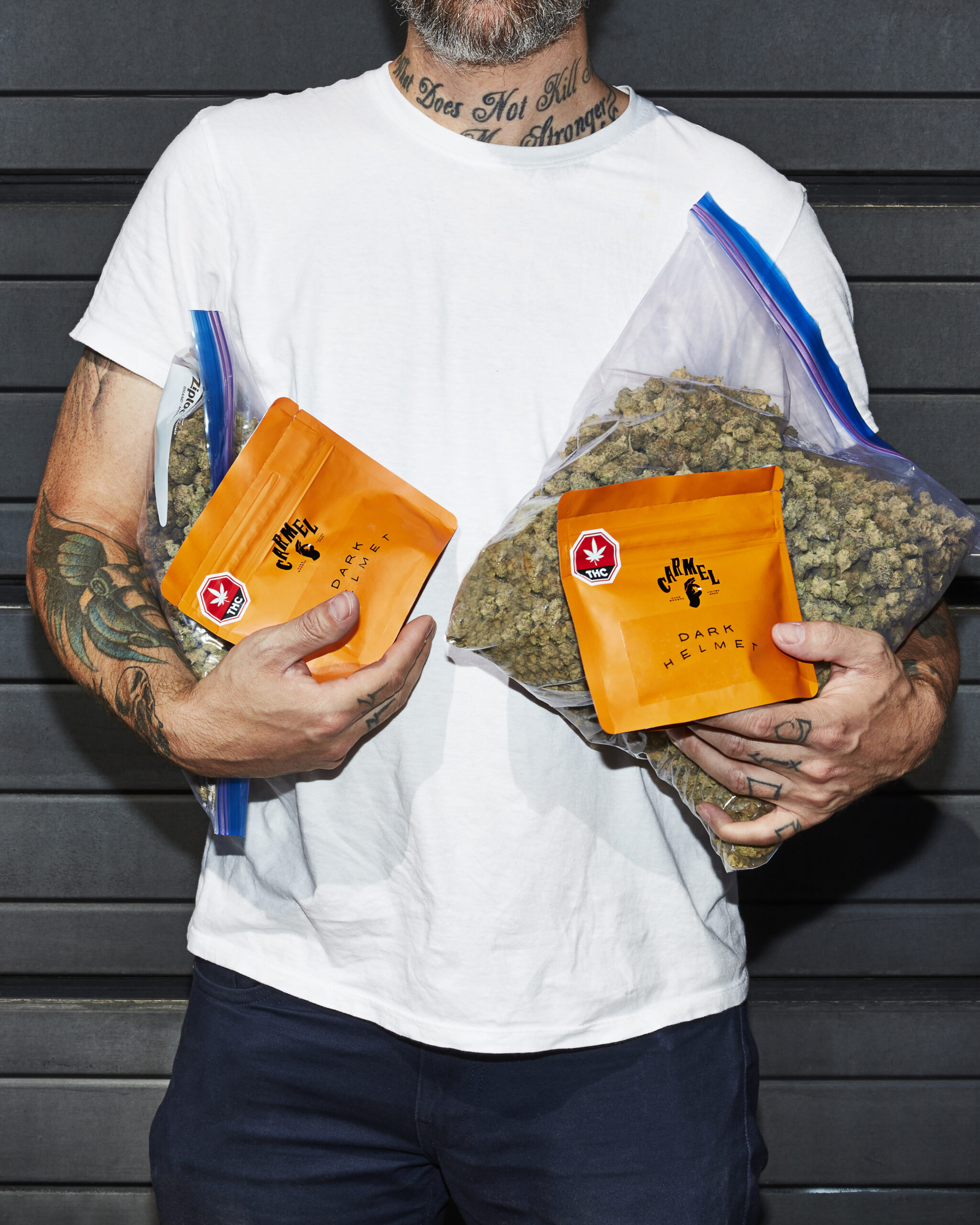Among all of the world’s cannabis history, lore, mythology and straight-up bullshit, the stories of the Strain Hunters’ expeditions—led by Dutch entrepreneur Arjan Roskam and the late Franco Loja, of Italy—are almost too good to be true.
Take the duo’s incredible, controversial journey to the Democratic Republic of the Congo in 2016, captured in a popular documentary by VICE. Their mission? To collect seeds from crops of rare and wild Congolese cannabis cultivars, which would involve a two-day journey by wooden boat from Kisangani, deep into the dark and buggy jungle, paying village leaders small amounts of cash along the way for the privilege. But to them, it’s worth the trouble: The seeds would be a valuable addition to the vast collection of cannabis genetics at their Green House Seed Company bank back home in the Netherlands, particularly with a new, legal cannabis market gradually opening up worldwide. Securing a sample of a Congolese landrace strain, a cannabis variety that’s been breeding with itself and not crossed with another variety, could mean billions of dollars in future revenue.
After a few disappointments, plenty of bug bites and several conflicts with locals who justifiably feel ripped off by cannabis colonizers, the Strain Hunters locate a thriving outdoor grow of a Congolese landrace.
“Seven days of bullshit, but this is it,” says a triumphant Loja (who shockingly died after contracting malaria on a follow-up trip to the country in 2017). “Who has come here to collect this? No one has this, bro. We have this.”
Nowadays, cannabis shoppers can find thousands of products under the Congolese name. Popularized in California and created by an unknown breeder, Red Congolese is said to be a combination of a Congolese landrace like the one sourced by the Strain Hunters, an Afghani landrace and a Mexican sativa. It’s wildly popular on the legacy market, particularly among women—which is exactly why some Canadian craft producers have selected it to bring to the legal market for the first time.
But is what’s available on the Canadian market anything like the wild landrace strains beloved by seed collectors? If so, how did they get here? And with all of the breeding going on underground and in sterile facilities by both hobbyists and scientists alike—not to mention the re-branding of cannabis strains for the mainstream market—is there any consistency among products labelled “Red Congolese”?

Before recreational cannabis legalization, there was a limited pool of genetics available to licensed cultivators, where Canadian companies were largely buying starter materials from each other, and what was available barely scratched the surface of the genetic variety internationally or on the illicit market. But the Cannabis Act changed everything when it came into force in October 2018, allowing aspiring licensed cultivators a one-time declaration of the genetics they plan to use, whether sourced from licensed nurseries or legacy breeders, as part of their licensing application.
But because new genetics can’t be added to a company’s bank post-licensing unless bred in-house or with a licensed nursery, it can be a frantic and wild adventure sourcing materials to truly take advantage of the legal exemption opportunity.
For Ontario-based Carmel, which has three new flower products coming to market this winter (Garlic Breath, Dark Helmet and Animal Face), rare breeds and limited grows are the focus for master grower Drew. He compares the hunt for cool genetics to sneakerhead culture, where growers add their names to waiting lists or compete in unusual contests to secure a coveted pack of seeds from reputable breeders. If growers don’t get a pack of seeds, there’s a secondary resale market where prices can inflate from $100/pack to $2500. He estimates he’s spent approximately $100,000 on seed-hunting alone—and he and his brother, Sean, are pretty good at playing the game.
“Exotic Mike of Exotic Genetics was attending a Cannabis Cup in Detroit, and he’d gotten into growing hot peppers,” explains Drew. “He announced on Instagram that he was offering an unreleased genetic if you were able to completely eat one of his Carolina Reaper peppers. My brother, Sean, who’s also our regional manager, he can eat peppers like he’s popping candy.
“He actually ended up bringing back two packs of seeds.”
But each pack of seeds is like a lottery ticket, he says—not at all guaranteed to succeed or thrive. For one, there could be male plants in there, which growers need to exterminate or move before nearby female plants are impacted. And not all female plants will produce the desired traits for award-winning flower, even if bred by an award-winning breeder.
That’s all part of the process of pheno-typing—the research and development of the cultivar to see if it’s worth cultivating en masse for consumers.
“When you grow it out, that’s when you’re gonna see if you have a Honda Civic or a Lamborghini,” Drew says.

Before they had access to labs, cultivators would go by how a strain makes them feel and its “bag appeal”—how it looks and smells.
But bag appeal is a thing of the past, for both cultivators and consumers. Packaging and marketing regulations mean that consumers can’t actually look at or smell a product before buying, presumably for sanitary and safety reasons.
Now, it’s all about the COA, or certificate of analysis, which also puts the skills of the cultivator and their approach to growing to the test. Unlike the qualitative observations made by growers and buyers of yore, COAs show the percentage of cannabinoid and terpene (scent and flavour) content in a sample. And while aficionados increasingly emphasize the significance of terpenes, with COAs showing terps as high as four per cent in some cases, the market is still, for better or for worse, laser-focused on THC.
“We are still in a market where we cannot look at the weed, we cannot see the weeds,” says Kieley Beaudry, co-founder of Edmonton-based Parkland Flower. “All we are seeing is numbers. And human nature is that if I'm paying a lot of money for weed or a lot of money for something, I want the highest content. In this case, THC.”
Both Beaudry, who is producing seeds for the home-growing market, and B.C.-based Gnomestar CEO Earl Oliver say THC content is the number one selection driver for most companies, big and small. That’s how Oliver selected his initial three cultivars, Meat Breath, Comatose Kush and Red Congolese, which all came from a batch of 39 different types of plants an investor dropped off at the facility.
“I chose Comatose Kush because it looked nice and healthy, and I looked up its characteristics,” Oliver says, simply. “And you know, I was just sort of crossing my fingers that it lived up to its name. And it came in with high THC and was a heavy-hitting cultivar. So that was the first pick.”

Back in the Netherlands, the Strain Hunters’ Green House Seed Co. and all of their international seed-hunting has certainly paid off. The company now has a Canadian outpost, Agripharm, located in Creemore, ON, which produces two strains bred by the company: Super Lemon Haze and Super Congo Haze, also known as “No. 1.” It’s a blend of Neville’s Haze and a Congolese landrace, and while it very likely isn’t the offspring of the same crop featured in the VICE documentary (there are multiple crops of landrace cultivars that have been pillaged all over the country), it could be the closest Canadian consumers can get to tasting something like it for themselves
And what about strains like Gnomestar’s Red Congolese? It was selected simply because it’s Mr. Oliver’s girlfriend’s favourite (aww), and had proven popular in California and on the legacy market. But is it anything like the Strain Hunters’?
Now, in the world of lab data and COAs, there’s a way to find out. Companies such as Segra offer a “DNA Fingerprinting Test,” which to verify the genetic identity of a cultivar against its enormous database of genetic data.
While the genetic identity of a cannabis seed may be crucially important to a seed collector or scientist, the average consumer may not care.
While the legalization and corporatization of cannabis has invited a flood of new genetics to the market, it has also meant that weed can be “white labelled.” A brand can simply acquire a bunch of a cultivar like Pink Kush and rename it something else completely to erase its former relationship to the legacy market and have more mass appeal. This process of rebranding cannabis to reach a wider audience will likely keep genetic nerdery in its niche.
It’s not a bad strategy, particularly for those of us who just want to buy some, any, weed.
But for craft cultivators and breeders serving a market hunting for new headspaces and exotic nugs, Canada’s legal market is only beginning to see what’s possible. Producers will breed new cultivars in-house, licensed nurseries are coming into the legal framework, many micro-cultivators are still in the process of getting licensed, and “you've got lots of LPs that are trying to partner with micros so that they can get extra genetics under their declarations,” Beaudry says.
“And so you're going to see, as the market matures, a lot more of these unique, exotic genetics.”
Finally—something to look forward to in 2021.
Share
LATEST
The pioneers in legal weed never can get over the…
Between 1999 and 2002, Lenny Kravitz won four straight Grammy…
Canna Cabana has a huge stock of great legal cannabis…
The Beaches are Jordan Miller, Kylie Miller, Leandra Earl, and…

LATEST MAGAZINE





